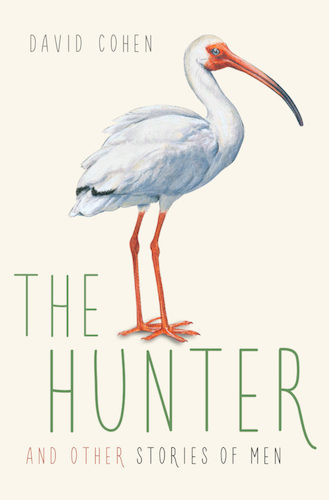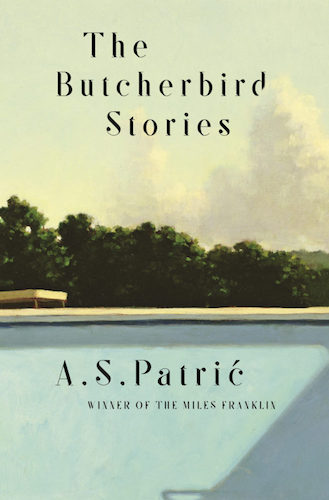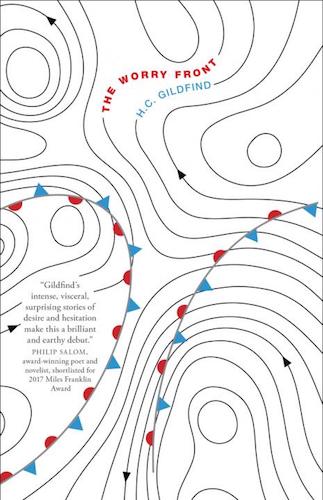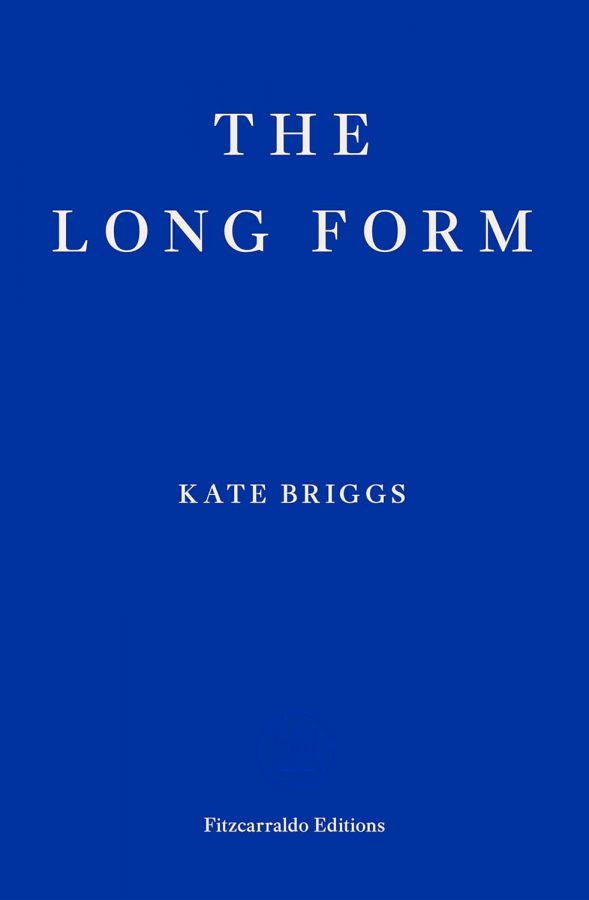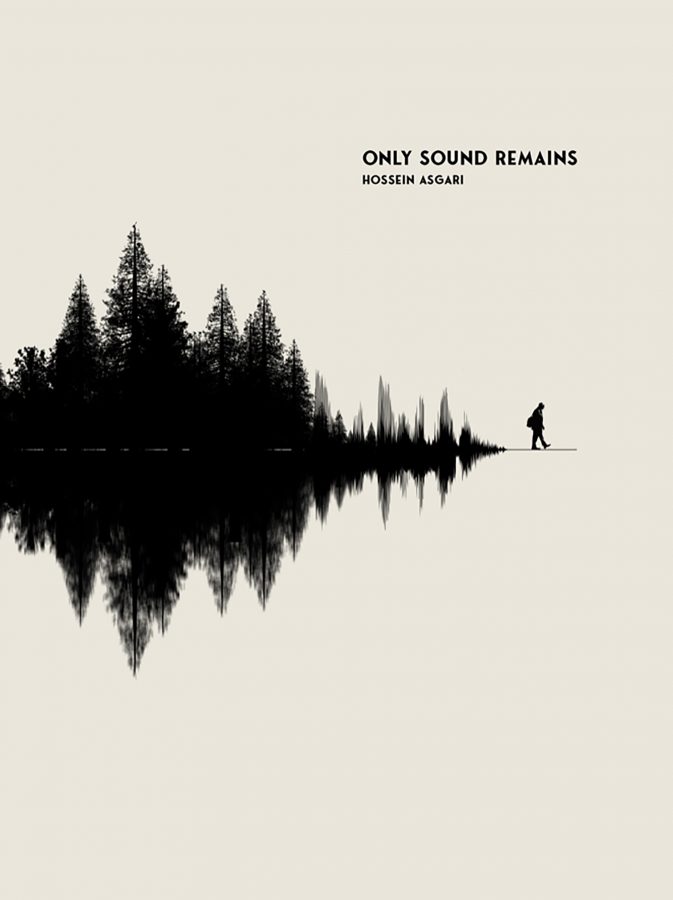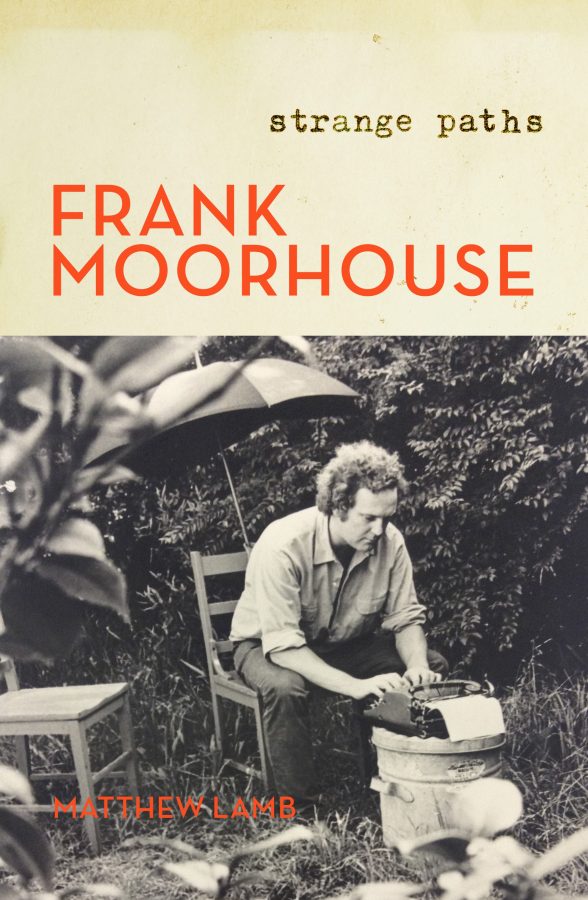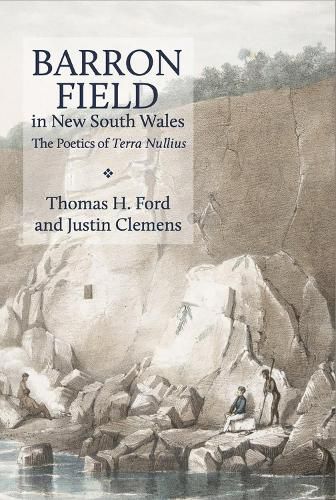Strange Things: New Australian Short Fiction
‘Honestly, what kind of topsy-turvy world are we living in?’ queries the narrator of one of the short stories in David Cohen’s The Hunter: And Other Stories of Men. The same thought occurred to me when reading a number of recent short story collections, where the banal gives way to the foreign, the ordinary becomes peculiar.
Cohen is interested in the comic possibilities inherent in ordinary life, its potential for pleasurable surprise. The quote above is from ‘Lament of a Bus Stop outside the Benrath Senior Centre,’ a bus stop’s querulous address about how he came to be stationed at an aged care facility. For all its novelty, there remains something reassuring about this story of the unexpected, Cohen’s anthropomorphised bus stop speaking in the same unpretentious vernacular as many of his collection’s human characters. It is his eye for the incongruous that is the source of Cohen’s comic talent.
Cohen’s 2017 novel Disappearing off the Face of the Earth is set in a self-storage facility next to Brisbane’s M1 motorway, an unpromising location for a work of Australian literature if ever there was one. ‘Who knows what’s going on behind that bland exterior?’ Cohen has said. The eighteen stories in The Hunter, his first short story collection, also approach reality as more than meets the eye. In ‘The Archive,’ a courier’s mysterious deliveries may or may not be intended to sabotage their elderly recipient. ‘Frequently Asked Questions’ parodies a carpet cleaning service website, elaborating at length on the merits of dry cleaning compared to steam cleaning before taking a somewhat darker turn. Mundane occurrences contain hidden meanings, and everyday life achieves a weirdly elevated dignity:
The ancient Egyptians may have revered the ibis, but we cannot afford to revere the ibis. The protestors aside, nobody reveres the ibis. On the contrary, we deplore their shameless scavenging. We recoil at the sight of their accordion necks. We are repelled by their black torn-stocking heads. Their downturned bills give them an expression of perpetual dissatisfaction that we find unpleasant.
The Hunter was shortlisted for the Dorothy Hewett Award for an unpublished manuscript in 2015, and won this year’s Russell Prize for Humour Writing. Passages like this one, from the collection’s title story, are humorous in their verbal extravagance, lavishing immoderate attention on lowly subject matter. In ‘The Hunter,’ a residential building project is halted when the site is overrun with ibis, the overzealous site manager resorting to unorthodox methods in his attempts to remove the birds. Cohen stands aside and describes these events with a straight face, creating an ironic counterpoint within the story. Stranger still, The Hunter’s cover image depicts what appears to be an American white ibis, rather than its black-billed, black-legged Australian counterpart, Threskiornis molucca, identified in the story. Could this be another instance of things being other than as they seem?
Tourism features in several of Cohen’s stories, where an outsider’s response to unfamiliar surroundings is the source of humour. The narrator of ‘The Virus (Travel Notes)’ is a travel writer visiting an Australian city inordinately proud of its hospitals: ‘I spent my first two days here doing little else except nodding my head and emitting small whistles of admiration.’ In ‘The Case of Nathan Gant’ a young backpacker in the Middle East is convinced he has heard a voice of revelation, speaking to him in the stock phrases of a travel guidebook. Cohen’s cheerful satire has much to say about the modern desire to derive the singular out of mass consumer experiences.
The bumblings of men when left to their own devices is a recurring theme: ‘as if all of life were a DIY project without end,’ one character puts it. ‘Pioneer’ sees a conveyancing lawyer build a log cabin using wood from the fence of a nearby nature reserve, taking comfort in the thought that he, like his self-reliant forebears, has used only local materials. After moving back in with his parents, the main character in ‘Woodcutter’ relishes a chance to perform as a woodcutter on a sightseeing railway, staying in character after the attraction closes. Mid-life crisis fiction is too strong a phrase for all the stories in The Hunter, though several of Cohen’s male characters take up unlikely projects owing to distant marriages or unsatisfying office jobs.
These short stories have a fable-like quality, as characters with a handful of identifying traits embark on quests of self-improvement. To call Cohen’s characters thin would be ungenerous, seeing as his stories aim to hold the reader’s attention through surprise and incident rather than well-rounded personalities. ‘A collection of twigs in the shape of a man,’ is how one character identifies himself; this could apply to any of the collection’s characters. Cohen’s exteriors conceal mystery and not human depth.
I enjoyed my time with Cohen’s topsy-turvy fictions, though even the collection’s lighter stories give off the depressing sense that the world consists only of bus stops, apartment blocks, hospitals, motorways, construction sites, and staff break rooms. In this world, life’s monotony is relieved by the prospect of the next big life project or overseas holiday, and human intimacy seldom extends further than a manly nod to the upstairs tenant.
Here is how one of Cohen’s characters describes his view of the house next door:
Through our bedroom window, which faced our neighbour’s property, I could see a portion of grey sky and a slice of his corrugated-tin roof. The rain that had poured down most of the night continued to fall, but lightly now. The sound of our neighbour wanking seemed so close.
Compare this with a similar moment from one of the short stories in A. S. Patrić’s The Butcherbird Stories:
He doesn’t see much outside the window, continues to stare at the ripple of black leaves on the dark limbs of a tree running with rainwater. There’s a cat’s-eye on the windowsill in the groove of a window track. He plucks out the marble and closes the curtain. The old couple would have been young when their child died.
How a work of fiction handles a stock literary scenario – ‘It was a dark and stormy night’ – says something about a writer’s preoccupations. Cohen’s measured sentences mean the reader is caught off-guard by the unexpected vulgarism of the word ‘wanking,’ and what will be his character’s attempt to get to the bottom of his neighbour’s nocturnal activities. Further description, of the weather or sky, the next door house or its inhabitants, would interfere with this passage’s punchline. In contrast, Patrić gives some attention to the view from the window, how the tree’s branches take on a certain hue at night, the way the leaves have their appearance altered by rain. There is time for Patrić’s character to notice a marble on the windowsill, an action irrelevant to the story’s plot, of a man moving into a room unoccupied since the death of the boy who once lived there.
These small touches may not amount to much, but they highlight part of what the carefully crafted narratives in The Butcherbird Stories have in common. Patrić is sensitive to the textures of lived experience, to language’s ability to pause over and consider human circumstances. A number of stories elegantly depict Melbourne in summer: ‘concrete shone white, scribbled in shadow here and there with the worn initials of the neighbourhood’s children.’
Characters don’t masturbate in The Butcherbird Stories, nor do acts of self-pleasure occur with great frequency. ‘I still wondered about permanence,’ says the title character in ‘Memories of Jane Doe,’ the story of an anonymous young woman’s murder and its unexpected consequences. These characters live with an awareness of mortality, of being born into a world that will outlive them.
Patrić’s sentences turn and shift while rendering sensation. These sentences are more central to his writing’s aesthetic orientation than the art objects depicted in ‘The Rothko’ and other stories in this collection. In ‘Among the Ruins,’ previously published as a standalone novella, professional rogue Bruno Kramzer shows up on opening night of an art exhibition, intent on disrupting the proceedings and embarrassing the artist. Bruno surprises himself while inspecting the artist’s paintings, observing how a ‘picture of a platter of fruit could capture the passing sweetness and imminent decay of things.’ It’s easy to go too far with analogies between painting and writing, mistaking the nature of the writer under consideration and scaring off potential readers. Patrić’s sentences frequently enact a quiet transformation of the physical world, treating something as mundane as swimming (‘flowing, fish-smooth through water–flat and calm and blue’) or seeing traffic through a taxi’s windshield (‘moving lights over a black ribbon’), with subtle imagination.
Patrić is often classified as a writer of the Australian migrant experience, and most readers will have come to his work through his Miles Franklin-winning debut novel Black Rock White City. His more thematically varied short stories, in The Butcherbird Stories and two prior collections, may yet prove equal to (better than?) his first novel. Much of his fiction takes shape around his debut novel’s geographical and emotional coordinates, Black Rock referring to the well-heeled Melbourne suburb where Suzana works as a cleaner in his debut, White City the Serbian language translation of Belgrade, city of Patrić’s birth and capital of the former Yugoslavia. The eleven Butcherbird Stories are split loosely between Patrić’s Melbourne stories and Belgrade stories, the best story in this collection, ‘Punctuated Air,’ filtering these two incompatible life-worlds through memories of a childhood spent playing in the grassy paddocks and half-constructed houses of Melbourne’s then-developing outer suburbs. This is Patrić’s most moving evocation yet of migration’s intensely felt experiential horizons.
The Butcherbird Stories is united by a darkness of vision, an intrusion of sudden, flashing violence into the lives of unsuspecting characters no matter where they were born. Patrić takes grim relish in the macabre: it’s not every writer who will release a bear into a sixtieth birthday party to have it chew off the hand of the birthday boy. Moments like this make me think Patrić owes more to Poe than Patrick White, the story ‘Avulsion’ in this collection the clearest display of his gothic credentials. Whatever readers feel about Patrić’s fondness for genre conventions, all over Black Rock White City in the creepy vandalism orchestrated by ‘Dr. Graffito,’ this is a signal feature of his storytelling, making the trajectory of his future writing difficult to predict.
Patrić’s fiction is held together by a series of recurring motifs: the songbird of the collection’s title, sunlight on shimmering concrete, self-reflections, both literal and figurative. A repeated image is that of the earth viewed from space, with one character thinking back to the ‘shitty poster’ of the iconic photograph blu-tacked to the wall of his childhood bedroom. As an adult, this photograph reminds him how ‘precarious’ life is:
What we’re a part of is an incredibly thin membrane really, when you take in the size and density of everything else trapped by the same star.
Patrić writes stories of human vulnerability in an uncaring universe, this constituting what could be called the ontology of his fiction, and also its ethics. In ‘The Flood,’ the 56-page final story, the collection’s pent-up hostilities flare in what should have been a routine encounter between a taxi driver and a passenger. What this story is suggesting we owe to the strangers around us is prefigured in the discussion of the Biblical Jonah in ‘Among the Ruins,’ and the sailors who wouldn’t immediately throw Jonah overboard even when they knew he was the cause of the storm. More than aesthetic consolation, Patrić’s fiction warily holds onto the possibility of hospitality, as what might offset what in his stories is the overriding bleakness and weirdness of being alive.
The Worry Front is the first book by Melbourne-based writer H. C. Gildfind. A quiet brilliance is on display in several of the collection’s stories, expressing the immensity of a life in a single moment or gesture.
He turns right at the water’s edge, his usual way. He swings his arms, punching the sky like an idiot but so what, so what. His blood races, chasing itself, washing him from the inside out, from the outside in. He swings and strides and stares across the cobalt water stretching from his feet to the far mountains flowing under the moonlit, dawn-lit caps of new snow.
This comes from ‘Ferryman,’ the collection’s most accomplished story, of a former schoolteacher commencing a new life after being accused of improper conduct by a female student. The story crisply evokes the first snow of a winter morning as the teacher tries to settle in to his unfamiliar surroundings, though behind these deliberate sentences is a morally ambiguous situation. Many of Gildfind’s narratives are compelling and disturbing in equal measure, tightly focalising around one character’s perspective to the exclusion of other points of view. The reader is brought to intimate terms with many of these characters, to the extent that one story contains an elaborate scene involving a stool sample kit, even as we lack full access to characters’ emotional and psychological states. This is true of ‘The Wished For,’ a story needing to be read more than once to understand why a woman has chosen to live by herself in a house in the bush.
‘An anatomy of worry’ is how Gildfind’s collection is described on the dustjacket, her stories sensitive to bodily life’s manifold traumas and pleasures:
I was too busy nursing my juicy, cramping guts to really listen but when finally, solemn as a saint, Renee led the usual closing sermon on how everything comes down to the universal, elemental, fundamental sex drive, I just wanted to scream, What are you talking about?
Gildfind sees the body as more than a vehicle for comedy or tragedy, though there is some of both here, looking instead at the prosaic side of how characters exist as embodied beings. ‘Solomon Jeremy Rupert Jones’ explores the complicated blessings of pregnancy, a theme in several Gildfind stories, as experienced when a couple’s agreement not to have children falters. The aging body is the focus of the collection’s title story, full of ambivalent reflections on the meaning of a life nearing its physical end.
Gildfind’s focus on the subjective experience of embodiment may be one reason the collection contains relatively little directly quoted speech, her stories told mainly through indirect discourse in the first or third person. This makes sense given The Worry Front’s confrontations often occur internally, its characters’ conversations hinging on what is silent or unsaid. Many of her stories represent a mundane, purposeful physical action from beginning to end, artfully tracing a character’s thoughts as they reach toward a moment of introspection or partial self-knowledge. Behind these stories of the body in its various phases is a philosophical idealism, and this is likely what leads Nicholas Birns to compare Gildfind with Woolf and Mansfield on the dustjacket. When reading The Worry Front, I was reminded of Sherwood Anderson. This is not because of anything to do with literary regionalism – Gildfind’s settings can be more atmospheric than circumstantially localised – or the short story cycle genre – no interactions occur between characters from different stories – but owing to her characters’ carefully rendered inner voices, oscillating between self-humiliation and self-regard, fearful of being misunderstood. Gildfind presents life as the inner worlds we inhabit as much as the outer worlds.
The Worry Front’s eleven stories are based on similar storytelling patterns. For this reason I found the collection’s first half the most engaging. ‘Quarry,’ the 77-page winner of the Griffith Review Novella Project, is Gildfind’s longest story. This story creates a buildup of events around a single character, a suburban café chef covered in scars from a deliberate incident in the kitchen years earlier. This setup allows the story’s central character to be cumulatively shaped by his interactions with other characters, even as structurally and thematically the long ‘Quarry’ is not unlike the more attenuated ‘Ferryman.’ Gildfind’s most novel storytelling occurs in the charmingly titled ‘Eat. Shit. Die.,’ told through the alternating monologues of Leo and Nina, two middle-aged friends who have gradually drifted apart since their university days. Distributing the story across two perspectives allows the reader to discern what neither character is able to directly say; expressions of what is otherwise ‘un-speaking and unspeakable’ recur throughout the collection.
One of Gildfind’s stories describes the ‘half-known chaos of impressions’ through which people habitually regard each other. For all their differences, Gildfind, Cohen, and Patrić all treat the short story as a mode of fiction where understanding is, momentarily, possible.
Works Cited
‘Disappearing off the Face of the Earth: A Q & A with David Cohen.’ Good Reading Magazine. 2017.
